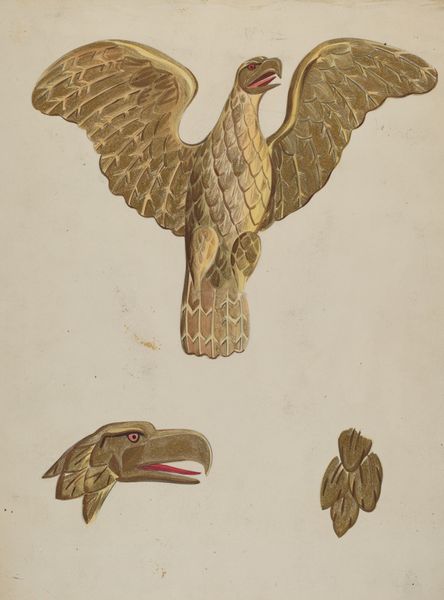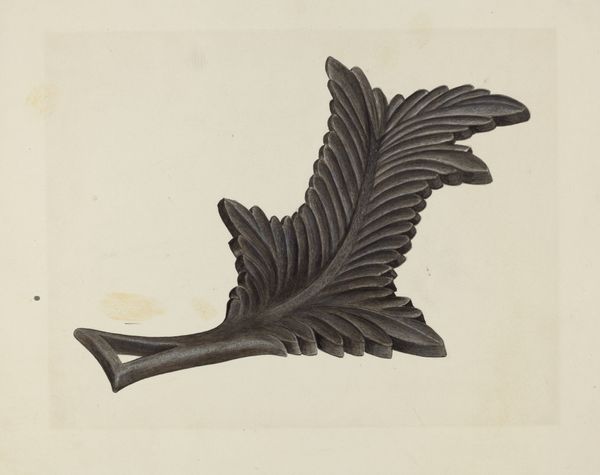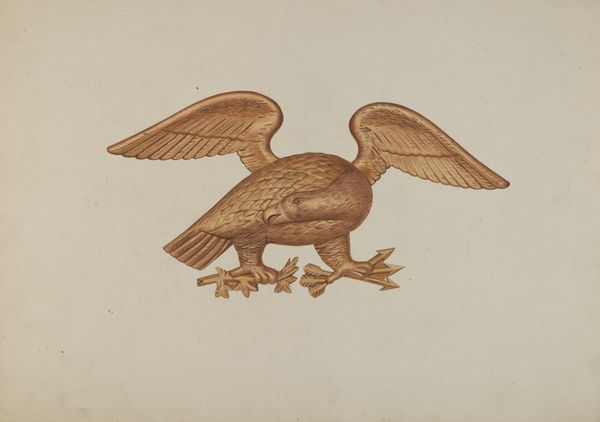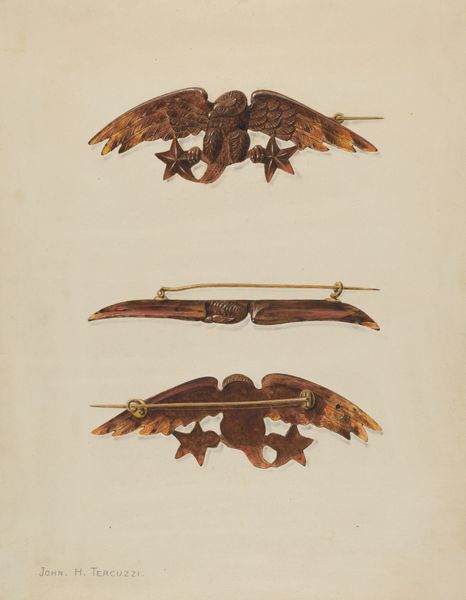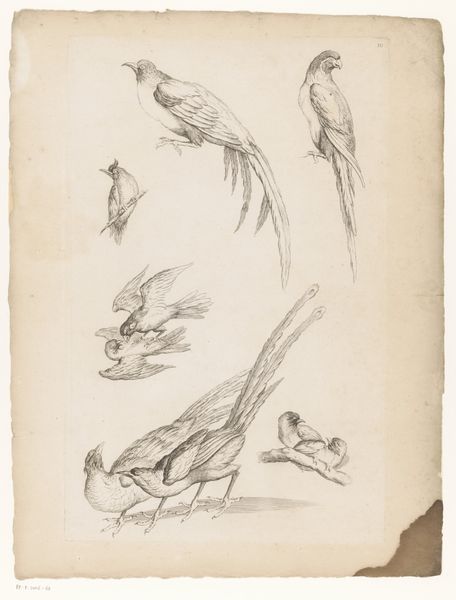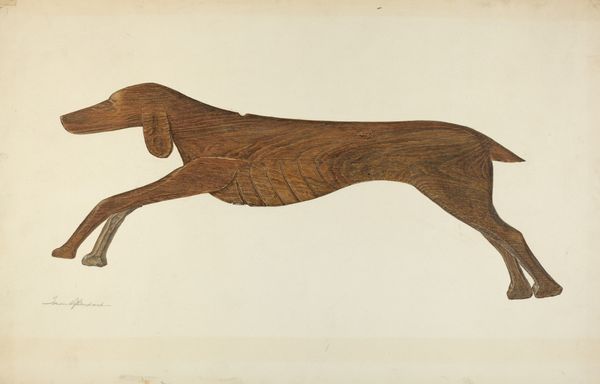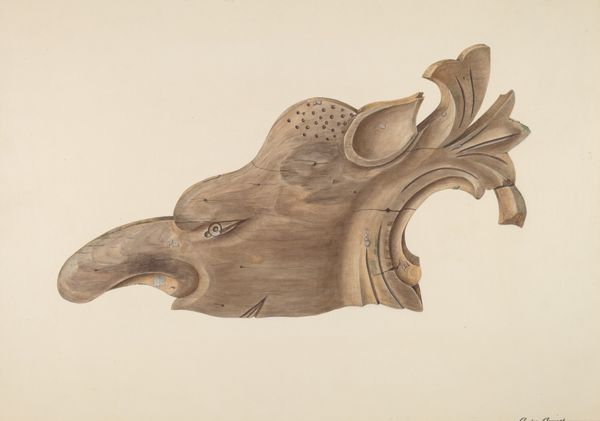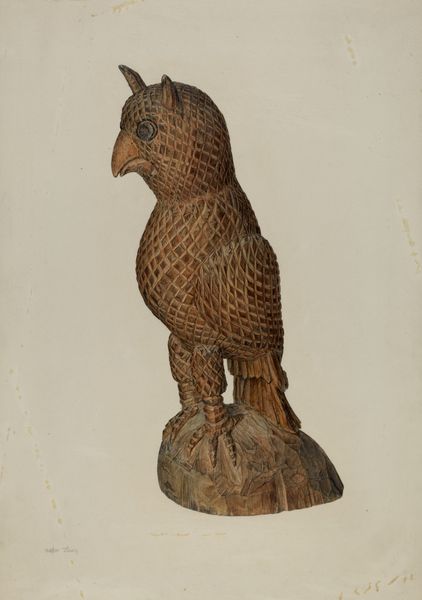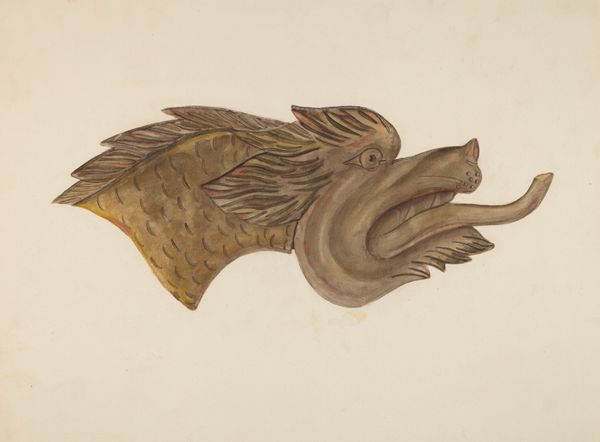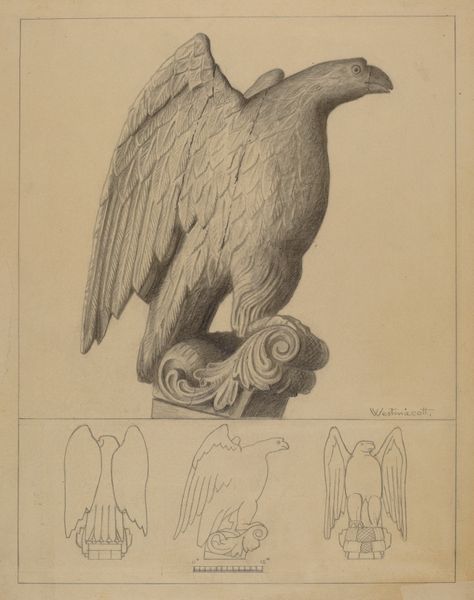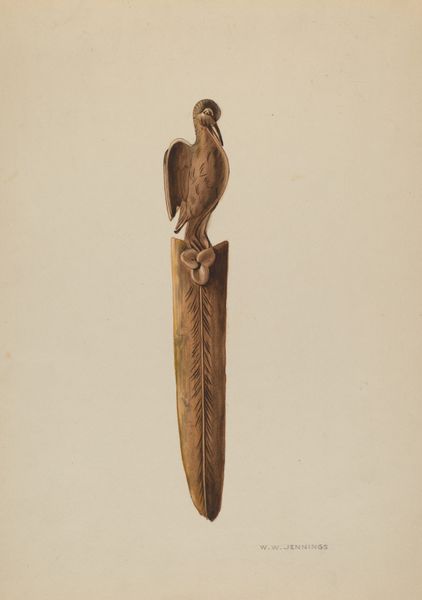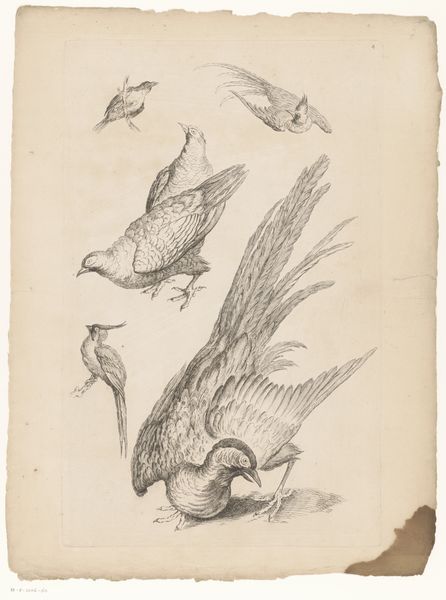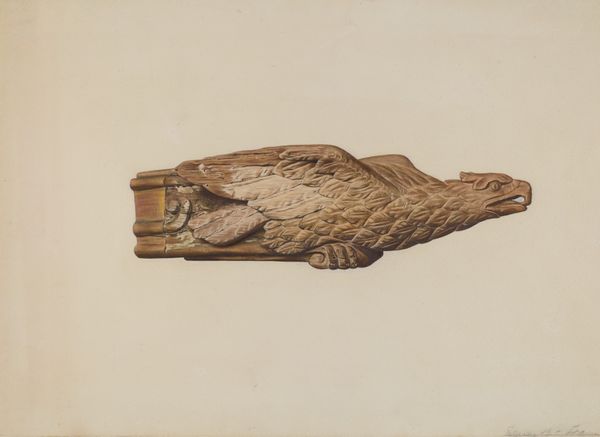
drawing, carving, wood
#
portrait
#
drawing
#
carving
#
figuration
#
wood
Dimensions: overall: 63 x 40.8 cm (24 13/16 x 16 1/16 in.)
Copyright: National Gallery of Art: CC0 1.0
Curator: Immediately striking, isn't it? Those two depictions of an eagle, carved from wood... it feels raw, untamed. Editor: Indeed. Let's contextualize that raw feeling. What we're looking at is a drawing depicting carved wood figures of eagles by John Collins from around 1940. Think about the artist, his tools, the socio-economic climate... that informs how he worked and what materials were available. Curator: Certainly, but before we get lost in the weeds, let's acknowledge the visual presence! See how the top figure presents a profile, powerful and alert. Below it, the flipped orientation offers a vulnerable underbelly. These perspectives give a complex reading of a potent symbol. Editor: Agreed, but to interpret these representations we must explore the means of production, how Collins, the craftsman, interacted with his medium. It wasn't paint; he confronted wood. We have to consider what carving represented within his community and, importantly, how his products were consumed. Who purchased and displayed these objects? Curator: That material engagement undeniably adds to the understanding, however let's delve further into what these stylized forms represent! The open beak on the upper eagle conveys dominance. These figures are pared down, symbolic, echoing broader themes. The rich tone of the wood grain underscores inherent energy, each piece is more than just a physical object. Editor: But can we fully address his design choices without questioning their accessibility, without tracing back these forms' material origins, from extraction to commercial distribution, we limit our insights by isolating the figure instead of recognizing the entire web of relationships that shaped his vision. Curator: Perhaps so, but our perceptions begin at that single object in the visual field, what we decode within this space informs broader investigations into his work. This balance between presence and absence opens up avenues for engagement—formal investigations, thematic implications. We simply observe and deconstruct what this creator puts forth and then extend this view into social aspects. Editor: I still propose we must engage within these constructs that make the figures. To look beyond is an important step. Curator: And perhaps that’s what’s makes appreciating pieces of art a rich experience—coming from differing perspectives lets all unlock new perceptions from within a creative work!
Comments
No comments
Be the first to comment and join the conversation on the ultimate creative platform.
